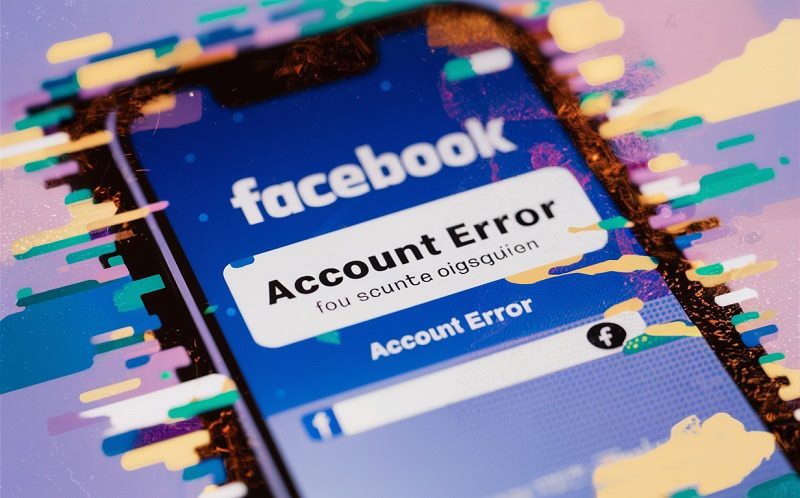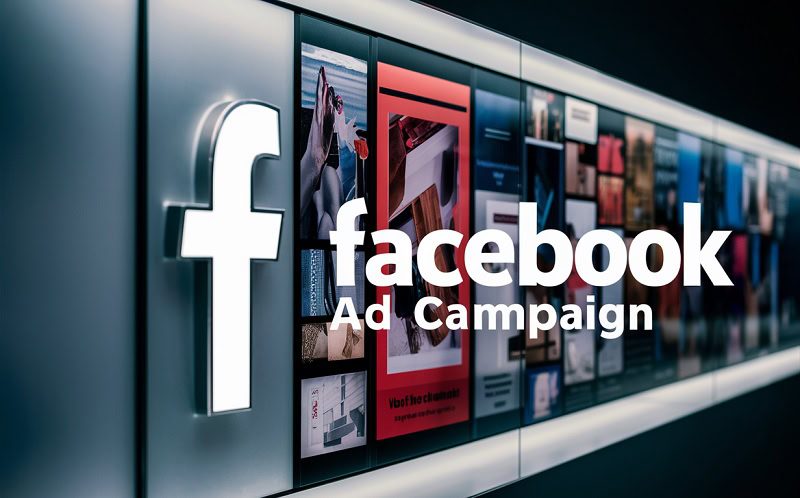If you’re planning to run a Facebook ad campaign, you need to ensure that you’re spending the right amount to deliver optimal results.
If you spend too little, you’ll struggle to achieve scale and increase conversions.
If you spend too much, you may end up wasting your budget and losing efficiency.
You need to spend just the right amount to crush your targets, like an e-commerce marketing Goldilocks.

Boost E-Commerce ROI: Download Our Free CPA & ROAS Calculator
But how can you calculate the perfect amount of Facebook budget for your business?
What’s the magic number that will help you to achieve your goals?
Let’s take a look at how you can optimise your Facebook spend, avoid common pitfalls, and provide your ads with the fuel they need to succeed.
How does ad spend impact your campaigns?
Since Facebook advertising works through an auction system, the amount you’re spending on your campaigns is very important, as this will impact the success of your bids.
Whenever an ad is served on the Facebook platform, a real-time auction has taken place involving multiple brands.
If you’re not spending enough to compete with other advertisers’ bids, you’ll struggle to deliver ad impressions.
And if you’re not delivering sufficient impressions, your target audience won’t even see your advertising. This clearly isn’t ideal for a profitable campaign.
Now, it’s important to note that success in the Facebook auction isn’t all about the size of your bid. Running high-quality, relevant creative assets is also key, so you’ll need to ensure that your ads are top-notch before launching a campaign.
However, quality ads need to be combined with effective bids. It’s a balancing act.
You’ll also need to find the right bidding strategy for your campaign, based on your business goals. For example, are you trying to drive acquisitions at the lowest possible cost, or are you more concerned with the value of the conversion?
It’s not just about the size of your total budget – it’s about how you’re spending it.
Your ad spend will influence several aspects of your Facebook campaign, from your competitiveness in auctions to the number of users that you’ll reach.
That’s why calculating the right ad budget is so important for e-commerce advertisers.
How to determine your optimal ad budget
To determine the best budget for a Facebook campaign, you’ll need to do a little bit of maths to hit the ground running.
(Don’t worry – nothing too strenuous!)
As a very general rule-of-thumb, a solid marketing budget is around 5-12% of a company’s revenue.
If you’re looking to grow rapidly you can lean towards the higher end of that scale, but there’s nothing wrong with starting small and gradually increasing spending.
Once you’ve settled on a starting budget that you feel comfortable with, it’s time to answer some key questions that will dictate your spending:
1. What’s the average order value for your business? In other words, how much do customers spend on average when they make a purchase?
2. What is the total average cost associated with a new sale? For example, staff salaries, packaging costs, shipping costs, etc.
From here, you should be able to calculate an approximate target Cost Per Acquisition for your campaign. To run profitable Facebook ads, you need to ensure that the revenue driven from a conversion outweighs your business and marketing costs.
If you’re struggling to calculate any of these numbers (for instance, if your business is brand new) then you can conduct some desk research to find benchmarks for your industry.
These benchmarks can help you to set some rough targets for your next campaign.
Calculating your Conversion Rate
As well as calculating an initial marketing budget for your campaign, it’s also important to figure out your conversion rate.
Your conversion rate will confirm the average number of link clicks you need to drive to deliver a successful conversion.
This will help to put your Facebook performance in context and highlight how effectively your current budget is being spent.
Fortunately, the conversion rate calculation is very simple:
To calculate your conversion rate, divide the number of conversions delivered in a set period by the number of visitors to your website, and multiply by 100.
Once you’ve crunched the numbers, you’ll be left with your conversion rate percentage.
If you have a specific target for your business, you can also use this logic to work backwards and determine a healthy budget.
For example, if you’re looking to drive £10,000 in incremental profit across a certain period, you can calculate:
1. The current average order value on your website
2. The business costs associated with a new sale or acquisition
3. The number of conversions needed to generate £10,000
4. The Cost Per Acquisition/Cost Per Click required to maintain profitability
5. The number of clicks needed to drive these conversions
6. The total budget you need to spend to achieve your goal
Although acquisition costs will undoubtedly fluctuate over time, calculating these numbers is a good way to set some clear guidelines for your campaign.
Distributing your Facebook budget effectively
Once you’ve established a monthly Facebook advertising budget that you’re confident in spending, it’s time to figure out how you’ll be investing it.
A solid Facebook strategy needs to distribute spend across the customer sales funnel to generate consistent results.
So, what exactly does the sales funnel look like? Below is an example of a basic funnel:
(Source: Techtarget.com)
This isn’t an exact science (because customers don’t behave like robots) but it does help advertisers to segment their budget effectively. The funnel is logical – consumers need to know about your brand before they’ll make a purchase.
How should I distribute my Facebook budget?
Around 20% of your Facebook budget should be allocated to ‘upper funnel’ brand activity.
For example, raising your brand awareness, educating consumers on your offering, and encouraging high-level engagement. This will help you to generate warm prospects who can then be converted later down the line.
You can then dedicate around 60% of your budget to sales-led, lower-funnel activity.
This is where you can focus on specific products and encourage prospects to convert with a direct sales CTA. This is where you’ll be driving high volumes of link clicks and conversions.
The final 20% of your budget can be used on retargeting tactics to increase sales.
Retargeting can be an extremely profitable strategy, as you’re re-engaging warm prospects who have interacted with your brand – for example, users who have visited your website, or added a product to their shopping cart.
However, to retarget effectively, you need to build a pool of engaged users first. This is where the rest of your funnel activity is crucial.
These percentages are just rough guidelines, so don’t be afraid to tweak your spend based on your results. Just remember that your budget needs to address different stages of the funnel to drive results.
4 common mistakes you need to avoid
Calculating your optimal Facebook budget is just half the battle.
You also need to understand how to make the most of your investment, and that means avoiding some frequent errors that advertisers can make.
- Don’t rush the Facebook algorithm
The Facebook algorithm is incredibly useful for advertisers. The platform can quickly identify the most profitable tactics for your business, and help you to adjust your spend accordingly.
However, the algorithm needs time to work.
If you’ve launched a new campaign and the initial results aren’t hitting your targets, don’t panic. Give the platform 3-5 days to collect data and optimise your budget.
Interrupting this learning phase can disrupt the algorithm and reset the optimisation process, so have some patience.
- Don’t restrict your budget
Starting small with your Facebook budget is absolutely fine, but the platform does need sufficient investment to test and learn.
If the Facebook algorithm can’t succeed in auctions due to low spend, it can’t deliver ad impressions or drive conversions.
That means the platform can’t collect campaign data, which will prevent you from making effective optimisations. Make sure that you kick off your campaign with a decent starting budget per day so that you can hit the ground running.
- Don’t choose irrelevant objectives
When you’re setting up your Facebook ads, you’ll need to confirm your main campaign objectives.
The algorithm will then focus optimisations on achieving this primary goal. If you select the wrong objective, your budget will be spent ineffectively.
Make sure that you think carefully about the right objective before launching your ads.
- Don’t overload yourself with data
Facebook provides advertisers with tons of valuable campaign data, which is great for reporting and optimisation,
However, sometimes the amount of data available can feel a little overwhelming.
To spend your Facebook ad budget effectively, make sure that you’re only focusing on the most relevant data points and metrics. If your priority is driving sales, metrics like clicks and conversions are infinitely more important than comments and shares.
How to optimise your Facebook ad spend
Effective Facebook spend optimisation ultimately comes down to thorough reporting.
You need to understand how different elements of your campaign are performing to understand where your budget needs to be spent.
For example, which audiences, formats and creative assets are delivering the best returns?
Once you’ve identified the strongest tactics, you can shift budgets around to provide them with more spend. If you find that certain strategies aren’t performing well, don’t hesitate to lower their budget, or pause them completely.
If you’re a newer advertiser, Facebook offers a feature called Campaign Budget Optimization (CBO) that can be extremely useful.
This tool essentially manages your Facebook budget optimisations for you, moving spend towards the most profitable tactics that are delivering revenue.
To utilise CBO in your campaigns, you’ll just need to set up the Facebook pixel so that the platform can collect accurate conversion data.
How to reduce wasted Facebook ad spend
To reduce any wasted or ineffective Facebook ad spend, you need to act quickly and decisively when ad sets are underperforming.
Be sure to set clear benchmarks for your campaign before you launch any ads.
This could be data taken from a previous ad campaign (e.g. a target CPA or CTR) or industry benchmarks that you’ve found online.
The clearer your benchmarks, the easier it will be to identify and pause ineffective ads. It could be that an ad is struggling to drive sales volumes, or delivering conversions at an excessive cost – whatever the case, don’t be afraid to pause and redirect your budget.
Increasing the budgets of high-performing ads
Increasing the spend behind your strongest ad sets is just as important as removing budget from underperforming ones.
The same principle also applies to both scenarios. You need to respond quickly when you identify an ad that’s delivering a strong ROAS.
Increasing the budget of an effective ad set allows it to scale and deliver incremental conversions. The budget increase doesn’t need to be enormous, but it should be sufficient to generate greater returns.
It’s also very important to monitor an ad closely once you’ve ramped up spend. Performance will always fluctuate over time, so you’ll often need to make quick adjustments after a round of optimisations.
It’s important to start a Facebook campaign with a healthy budget. This allows you to gather valuable campaign data and make efficient optimisations more quickly.
However, it’s also important to remember that costs and spend will inevitably fluctuate over time. That’s just a part of social media advertising.
The key is to stay agile and react quickly to your reporting insights.
If you act decisively to support high-performing tactics and pause low-performing ads, you’ll be able to maximise the results from your budget. Best of luck!
For help from an expert Facebook ads company please get in touch.






